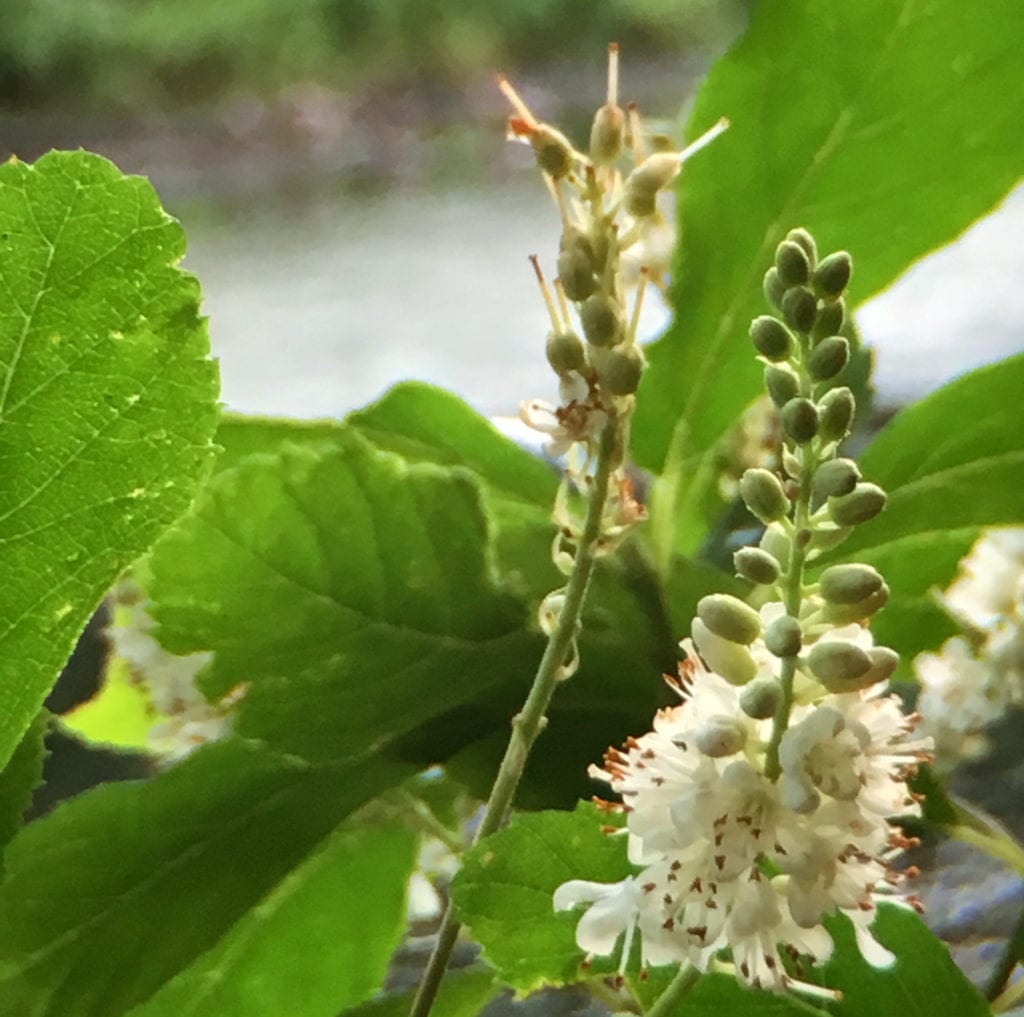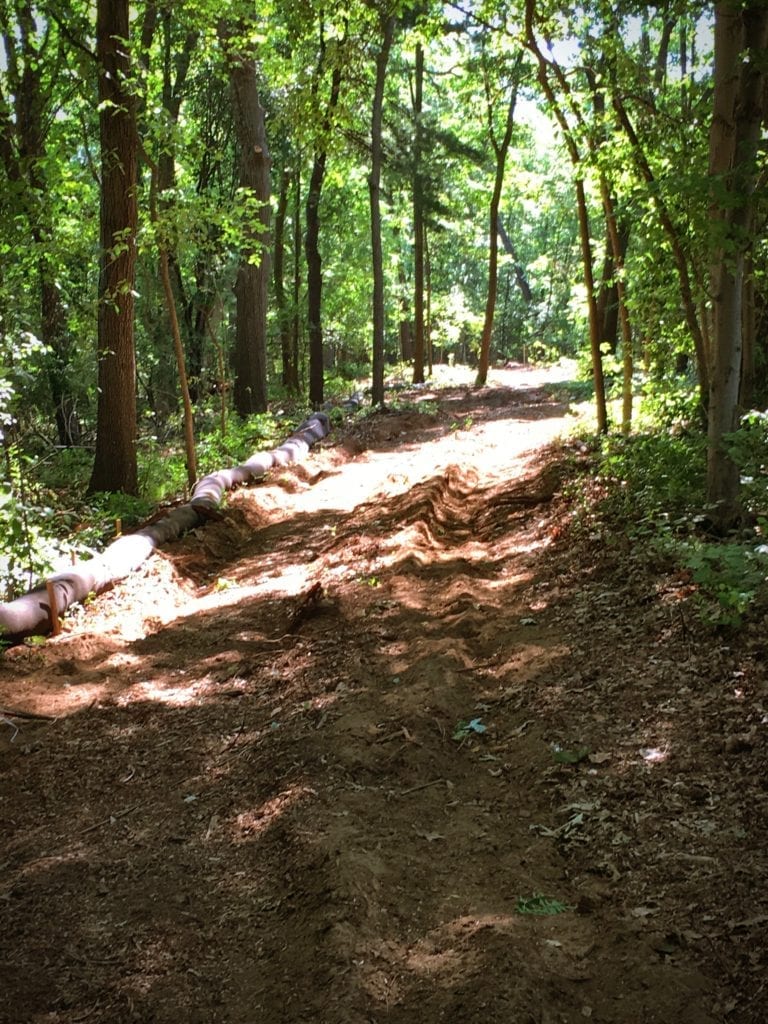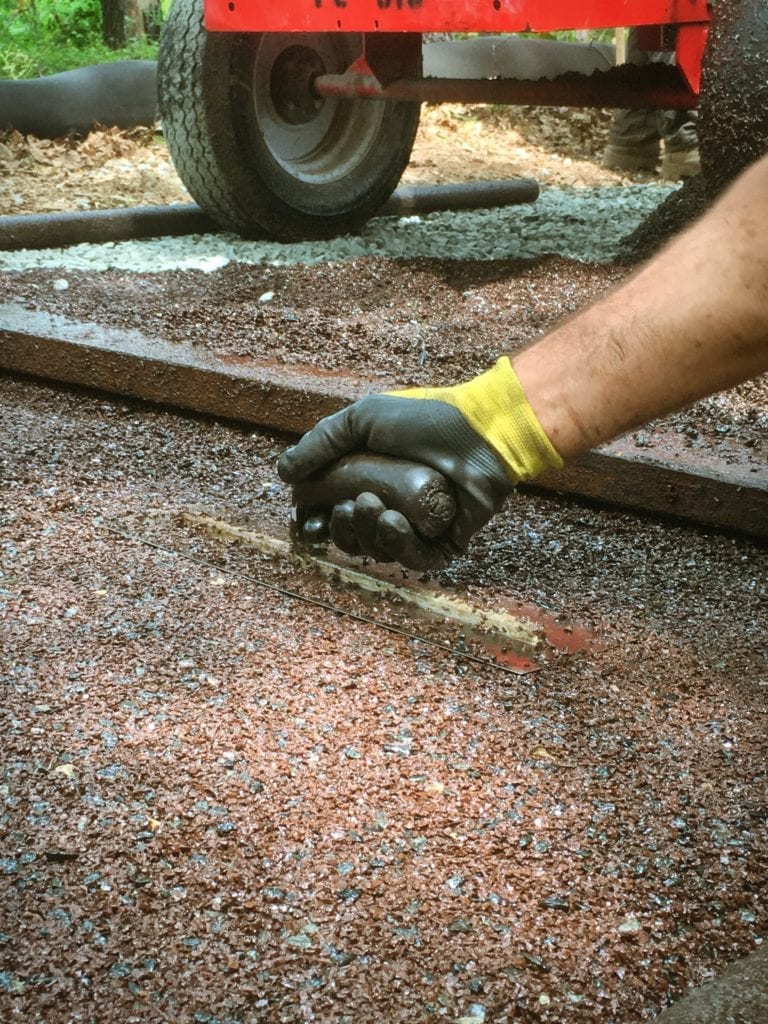by Trevor Smith
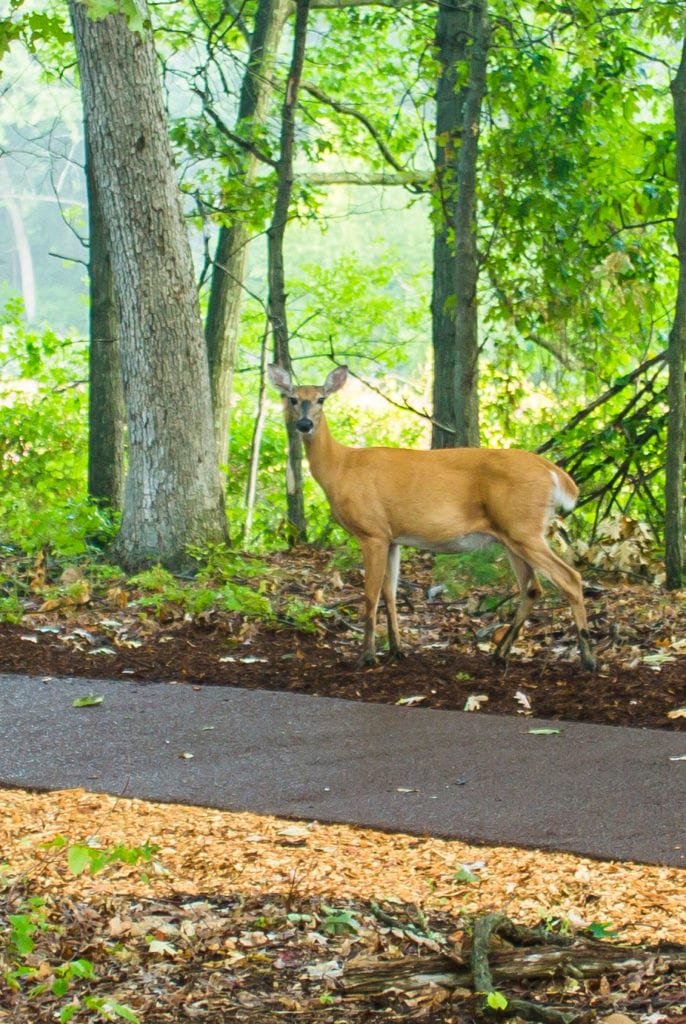
It’s not unusual to catch a glimpse of wildlife along the new Charles River Pathway. Photo: Robert Frechette
The rising sun peeks over the Charles River, golden rays explode through the towering oak canopy. The heavy sweet scent of Clethra perfumes the air with undertones of fresh water and earth. A heron fishes for breakfast just off shore; a deer walks up the bank from the water as turkeys root around in the leaf litter. The high pitched squeak of a startled chipmunk pierces the air alerting the wood to my presence. A mother duck ushers her ducklings into the water, the white tail of the deer is all I see crashing into the brush while the turkeys just keep foraging. All of this, and I haven’t walked more than 60 feet down the newly constructed permeable Charles River Walking Path.
A Permeable Approach
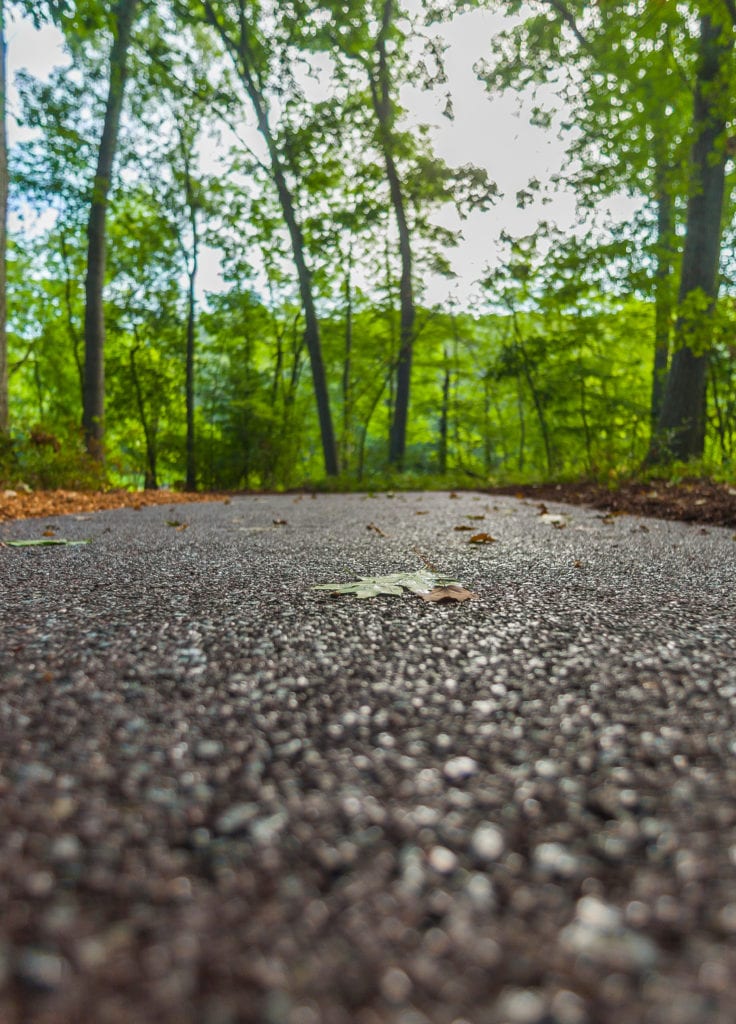
The Porous Pave™ used for the walkway allows storm water to soak through rather than pooling. The product, made with recycled truck tires, produces a strong, comfortable walking surface. Photo: Robert Frechette
The half-mile path was recently constructed in back of the Wellesley Office Park on William Street with two boardwalk bridges and multiple vista points overlooking the water. The land is owned by the Department of Conservation and Recreation (DCR); however, the walkway was funded by John Hancock Real Estate USA. The walkway was installed using Porous Pave™ a durable pervious paving material and was designed to have little to no effect on the delicate hydrology of the area. Porous Pave™ is made from recycled truck tires that are ground up and combined with a fine aggregate and a urethane binder. The mix is then spread like concrete and hardens into an extremely durable, highly permeable surface strong enough for low speed auto traffic and comfortable to walk on.
The John Hancock Charles River Walking Path diverted 6,000 tires from the landfill and can absorb 5,800 gallons of water per hour per square foot. In addition to the recycled content and high permeability, the Porous Pave™ surface is freeze and frost-heave resistant and provides significant traction. Normally such a permeable surface is used to reduce flooding and the impact of storm water. It is great for driveways and walkways because it resists freezing and cracking in winter and allows for maximum return of water back into the ground. In this case however, the pervious surface is designed to provide a safe comfortable walking path through the woods without disrupting the normal water flow to the river and its inhabitants.
Designing Responsibly and Sustainably
What draws me to Low Impact Development (LID) and Green Infrastructure (GI) design is the challenge of how to build it “the most” responsible and sustainable way. This was a priority throughout the entire process of the walkway. At the start of the project, an arborist was brought in to choose the path and clear the way. The half-mile route was determined by the forest itself winding its way through invasive plants, scrub, and sick or dead trees.
Once the route was decided, the path and overhanging dead branches were cleared and the material chipped on site. For habitat, snags were left along the path but far enough off the trail that they won’t fall onto the path. Also, some of the limbs were left along the ground. To help protect the trees lining the path, root pruning was done so the roots would not be torn and trees would not be pulled during excavation.
Following the route of clearing, the path was excavated eight inches deep and then six inches of three-quarter-inch crushed gravel was added and compacted. Two areas were left alone along the way where boardwalks were to be built – one over a low area that floods regularly and the other over a vernal pool.
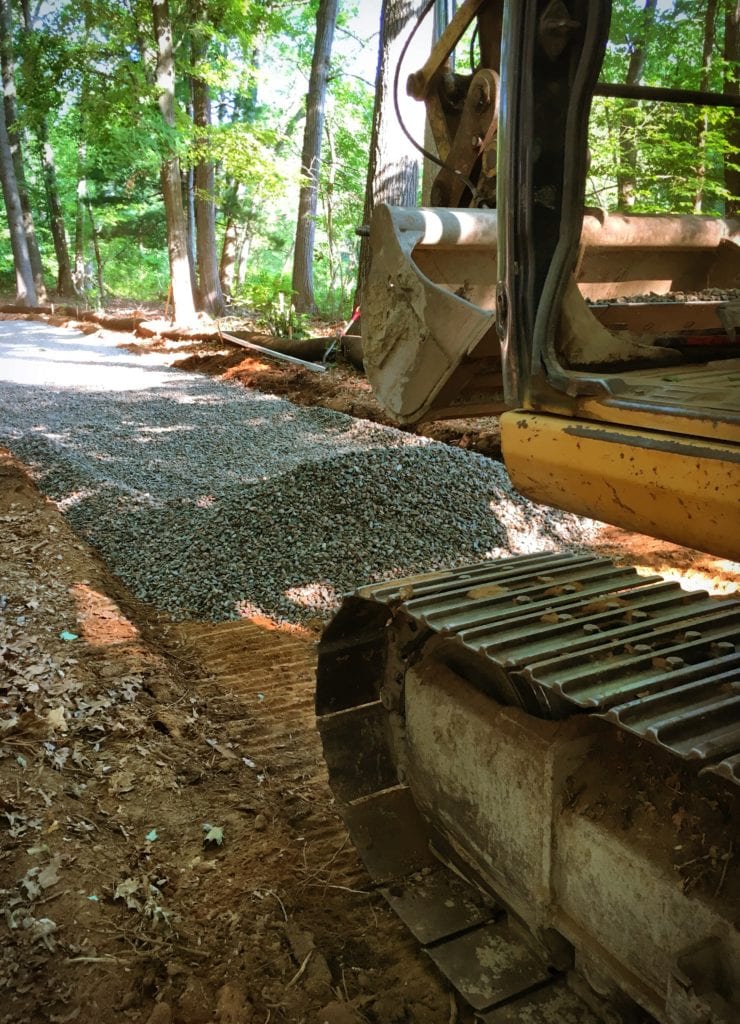
After carefully clearing the path, we lay a six-inch base layer of crushed gravel. Photo: Trevor Smith
For the installation of the Porous Pave™ great care was taken to limit the number and size of machines. A skid steer was used to place the pallets along the path, and a tow-behind mortar mixer was pulled along the path by a utility ATV. The application process of Porous Pave™ was mostly done by hand. Once the mix is dumped from the mixer it is raked out, screed to the desired depth, hand troweled, and finally bull floated until smooth.
For smaller jobs no machines are needed and the entire process can be done by hand and mixed in a wheelbarrow. For this particular project, five crew members were needed: one on the skid steer for set up and clearing, two on the mixer, and two to screed and trowel.
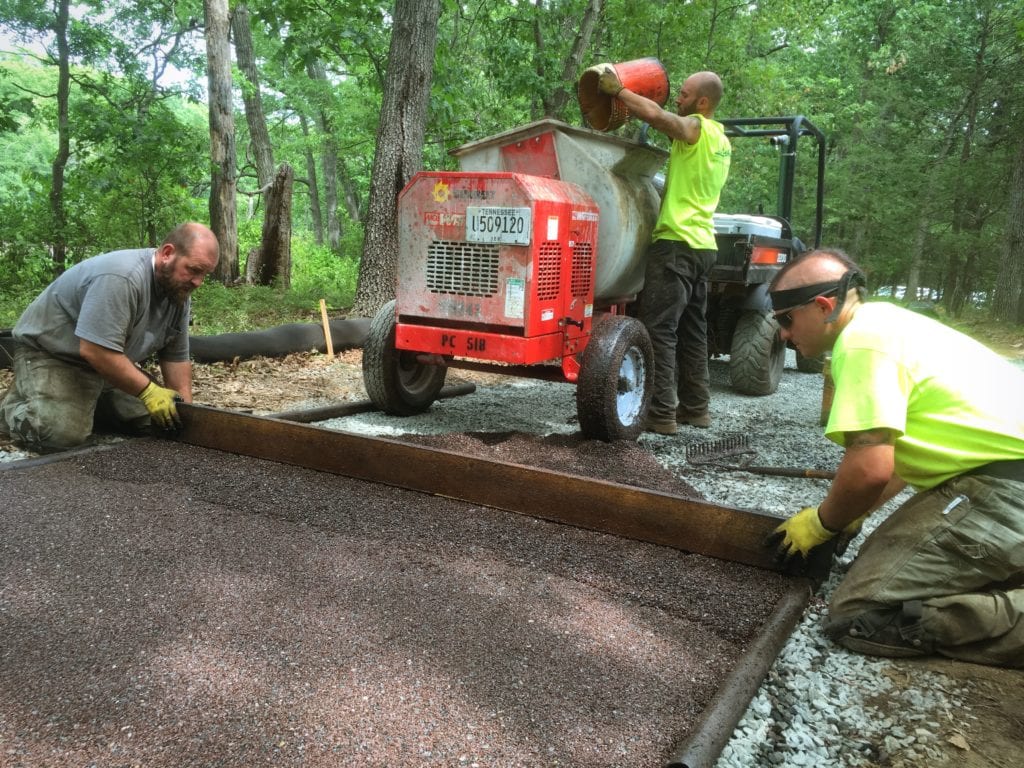
We were careful to limit the number and size of machines on the site and kept to the path. Porous Pave™ dumped from a pull-behind mortar mixer was then raked, screed, troweled, and smoothed with a bull float, all by hand. Photo: Christina Donovan
Natural Connections
The Charles River Walk is the largest Porous Pave™ installation in the northeast. John Hancock, in funding the project, has demonstrated the sustainable mission many companies are implementing. Since many companies are adopting creative strategies to improve the work environment for their employees, this scenic escape could also be viewed as an added employee benefit.
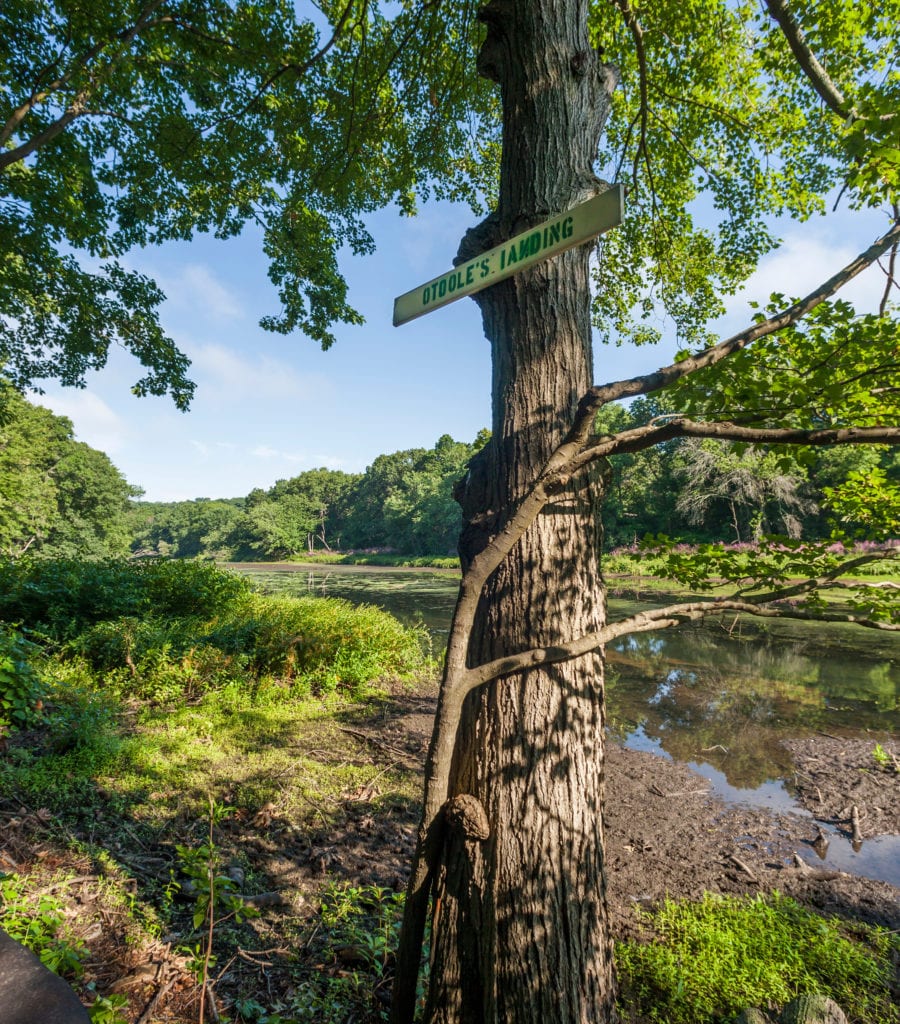
Whether walking with a purpose or casually strolling, office park employees benefit from time spent alongside nature. Photo: Robert Frechette
We have all heard about tech companies installing game rooms, offering “bring your pet to work” days, etc. and this scenic escape falls right in line with these initiatives. It may even be better, because it gets you outside of the working world and immerses you in the natural world.
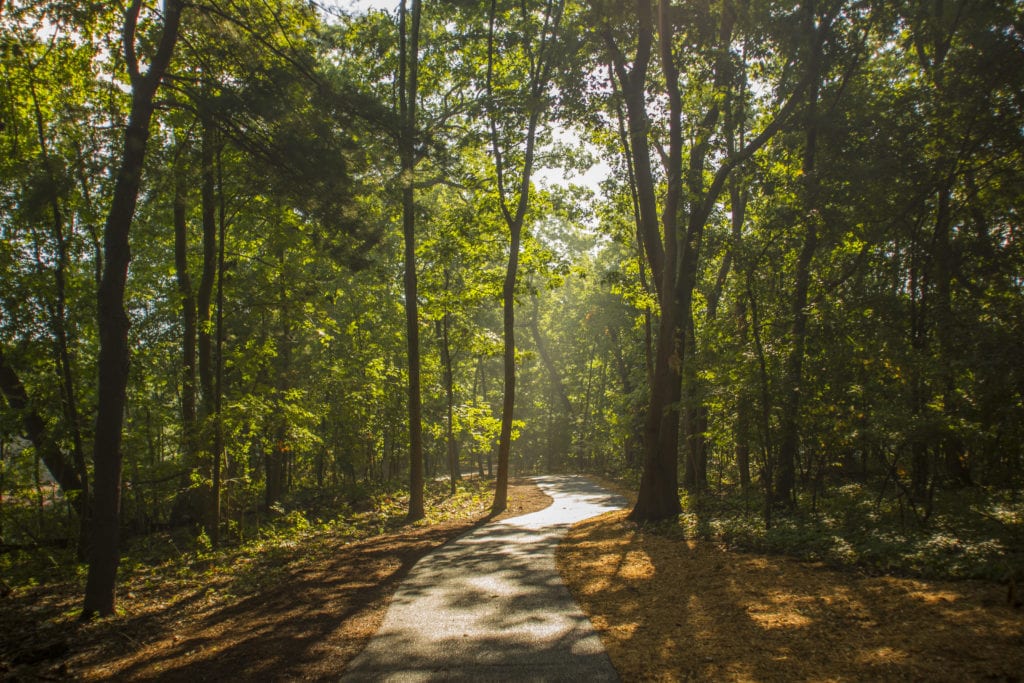
Dappled light along The Charles River Walkway invites walkers to the trail and inspires moments of “Forest Bathing.” Photo: Robert Frechette
The practice of Shinrin-Yoku, Japanese for Forest Bathing, is becoming the latest fitness trend in the United States. Forest Bathing is simply connecting with a natural space, often wandering through forest paths. Extensive studies have been done on Shinrin-Yoku and have shown marked reduction in cortisol, the stress hormone, as well as reduced blood pressure and an improved immune response and cerebral blood flow.
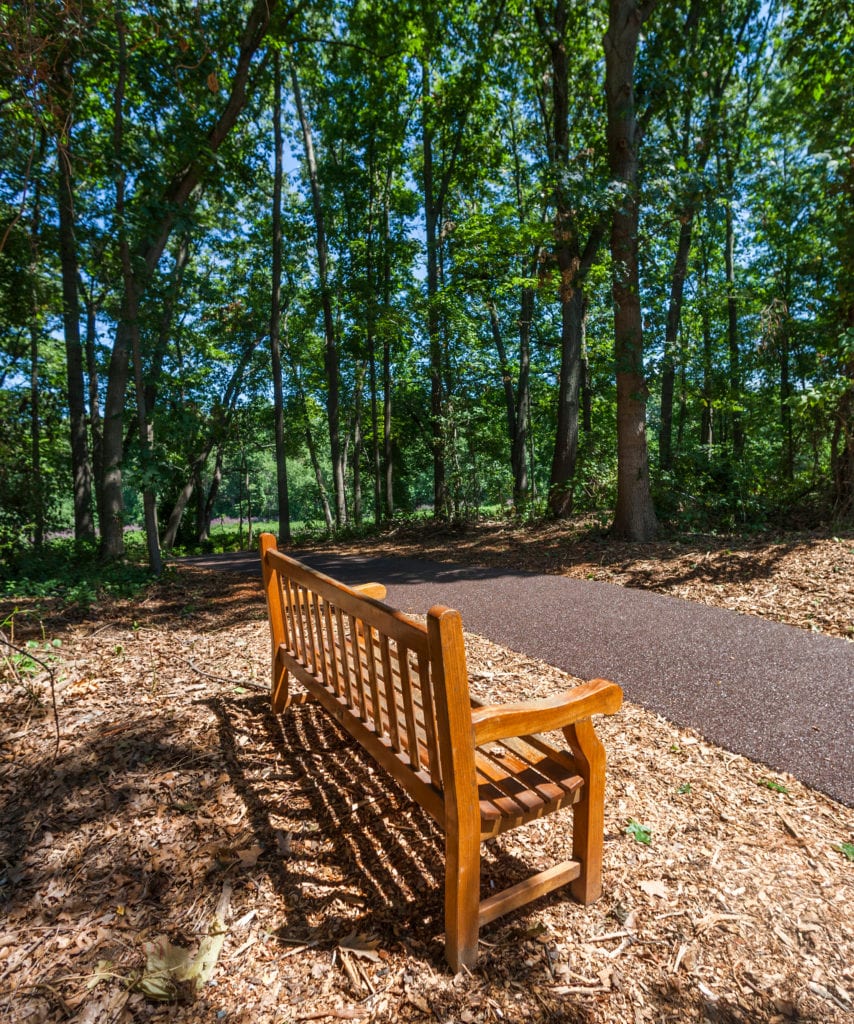
A bench along the trail invites walkers to stop a moment and enjoy the view. Photo: Robert Frechette
As the science between health and nature continues to grow and more companies begin to look for workplace amenities that match their sustainable mission and as cities and towns continue to convert old railways to bike and walking paths it is increasingly important to do so responsibly. Fortunately, there are low-impact solutions to address these challenges that maximize people’s accessibility and connection with nature without disrupting or significantly altering the delicate balance of the natural world.
Observe the permeable qualities of Porous Pave™.
A man-made solution that is good for the ecosystem.
About the Author
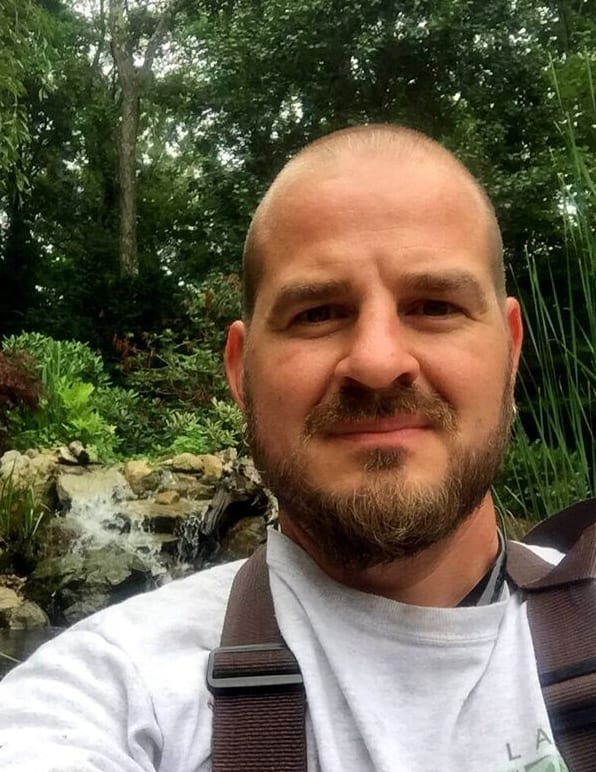 Trevor Smith is Lead Designer for Land Escapes, a full-service ecological landscaping company in the Boston area that specializes in garden design, eco-rain recovery, water features, and living wall installations. Trevor is also the past president of ELA.
Trevor Smith is Lead Designer for Land Escapes, a full-service ecological landscaping company in the Boston area that specializes in garden design, eco-rain recovery, water features, and living wall installations. Trevor is also the past president of ELA.
The John Hancock Charles River Walkway opens to the public in October 2016. Trevor will conduct an Eco-tour of the Charles River Walk, share more details, and answer questions about the project on October 17, 10:30am-12:30pm.
Each author appearing herein retains original copyright. Right to reproduce or disseminate all material herein, including to Columbia University Library’s CAUSEWAY Project, is otherwise reserved by ELA. Please contact ELA for permission to reprint.
Mention of products is not intended to constitute endorsement. Opinions expressed in this newsletter article do not necessarily represent those of ELA’s directors, staff, or members.

